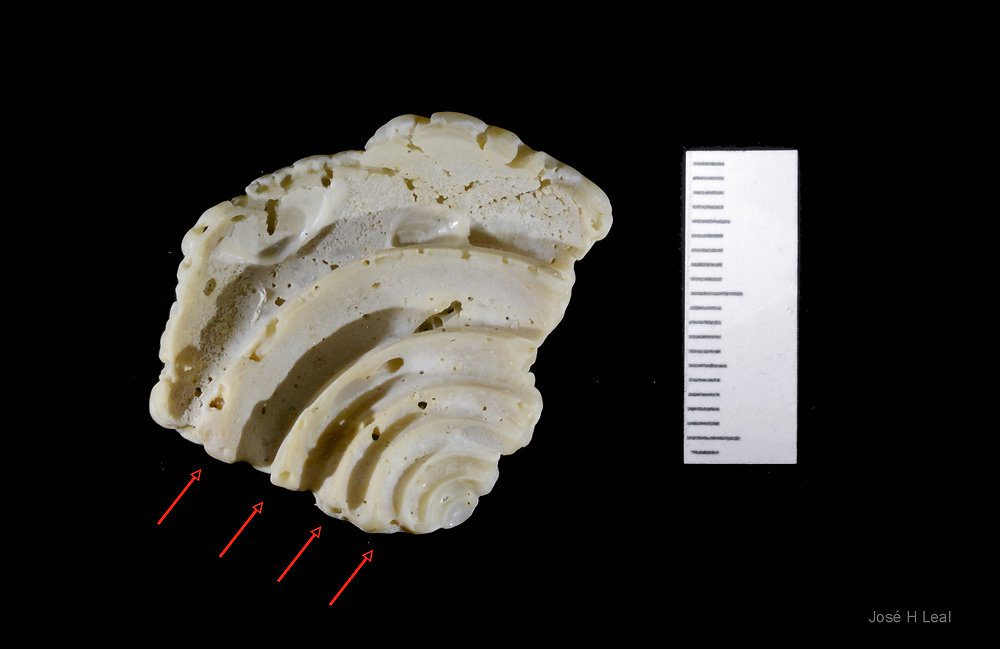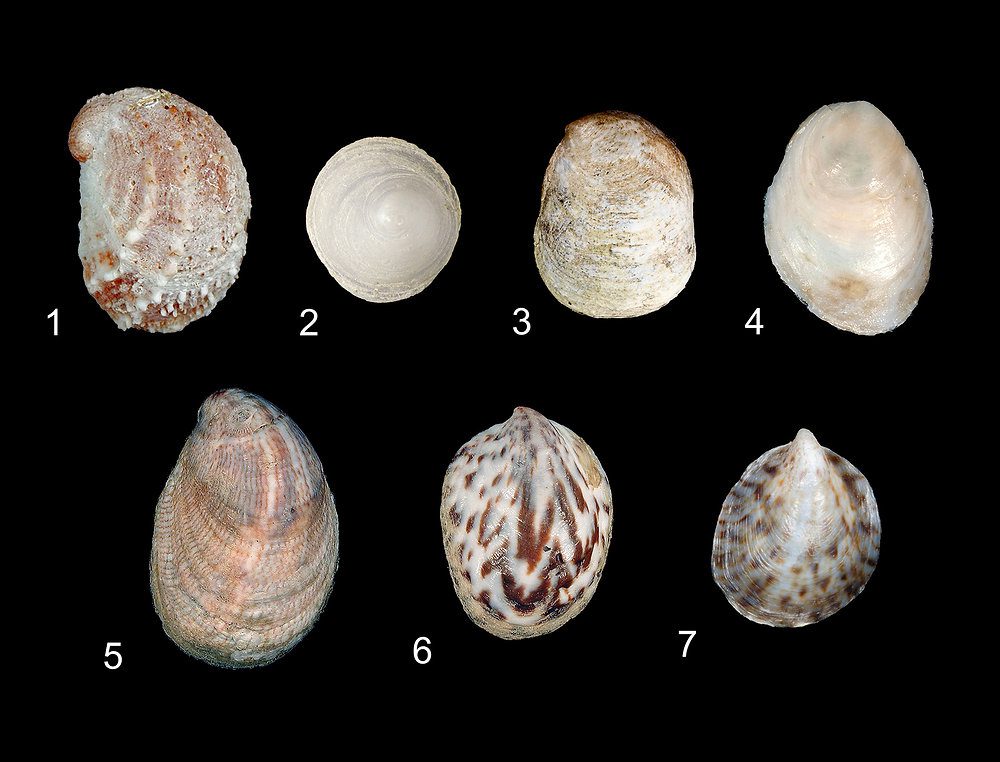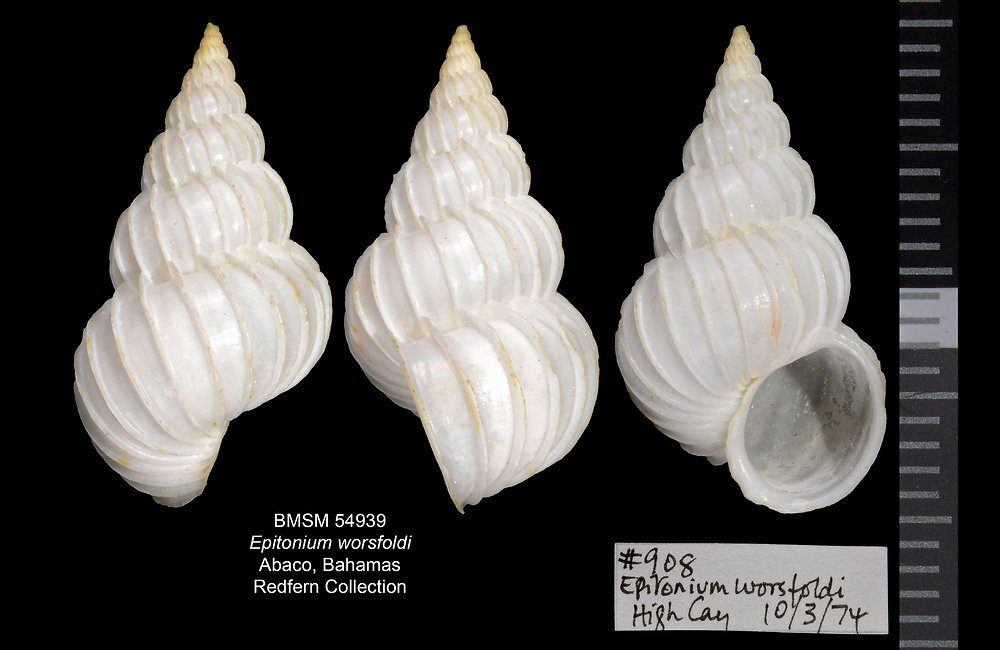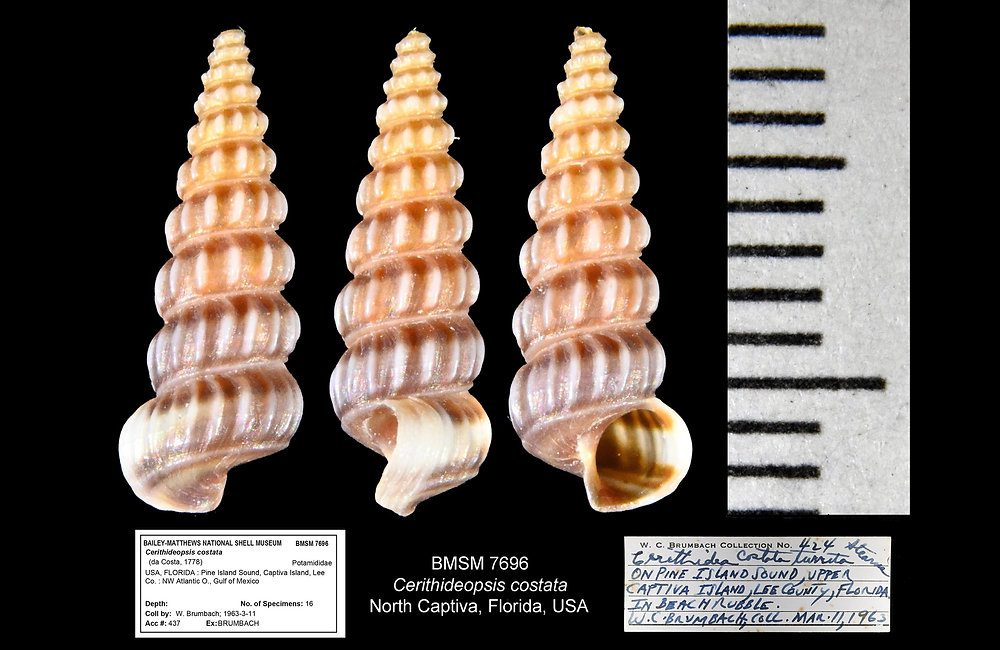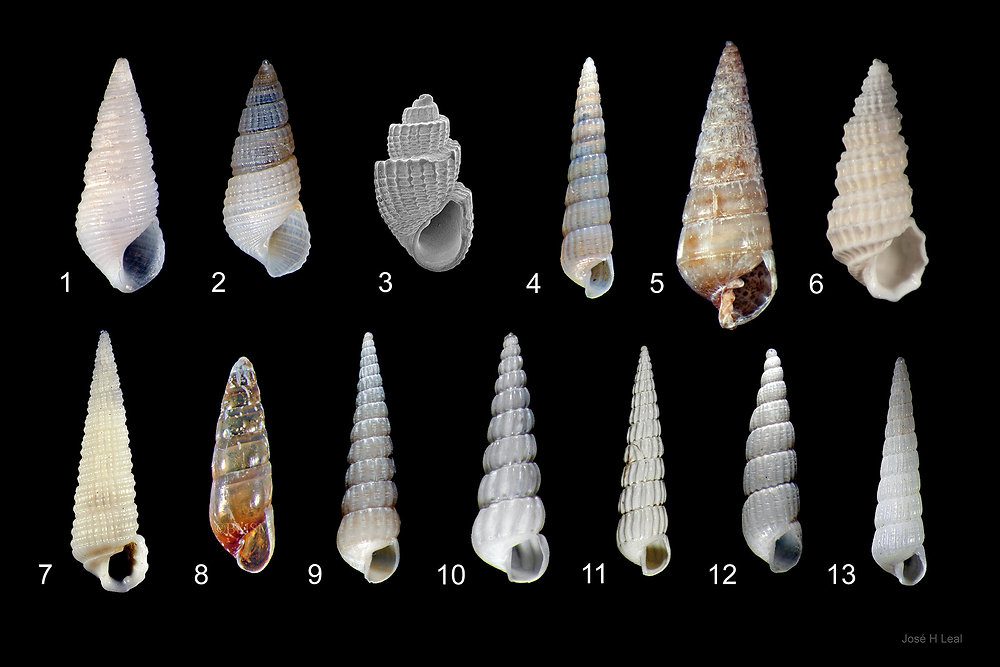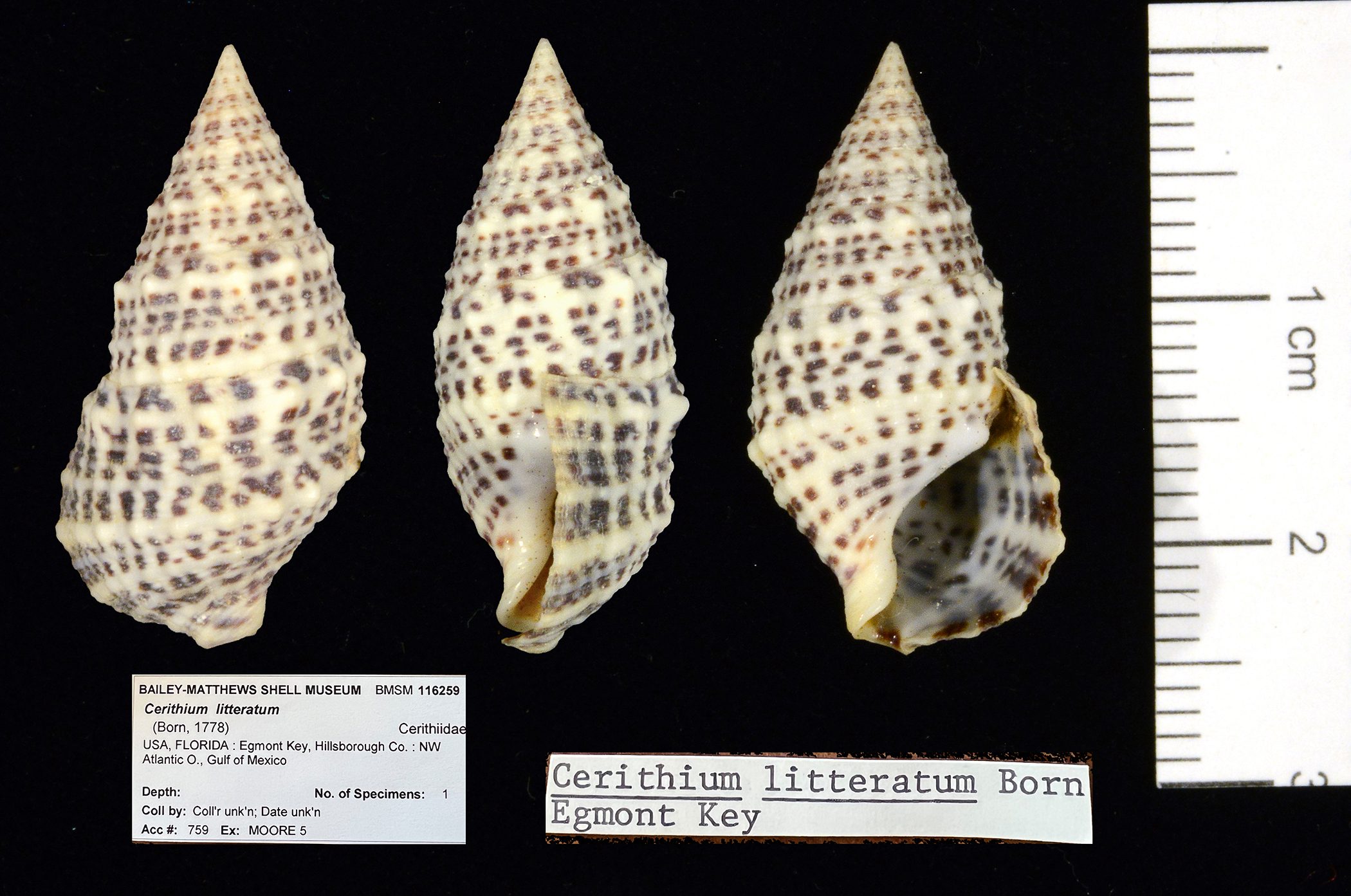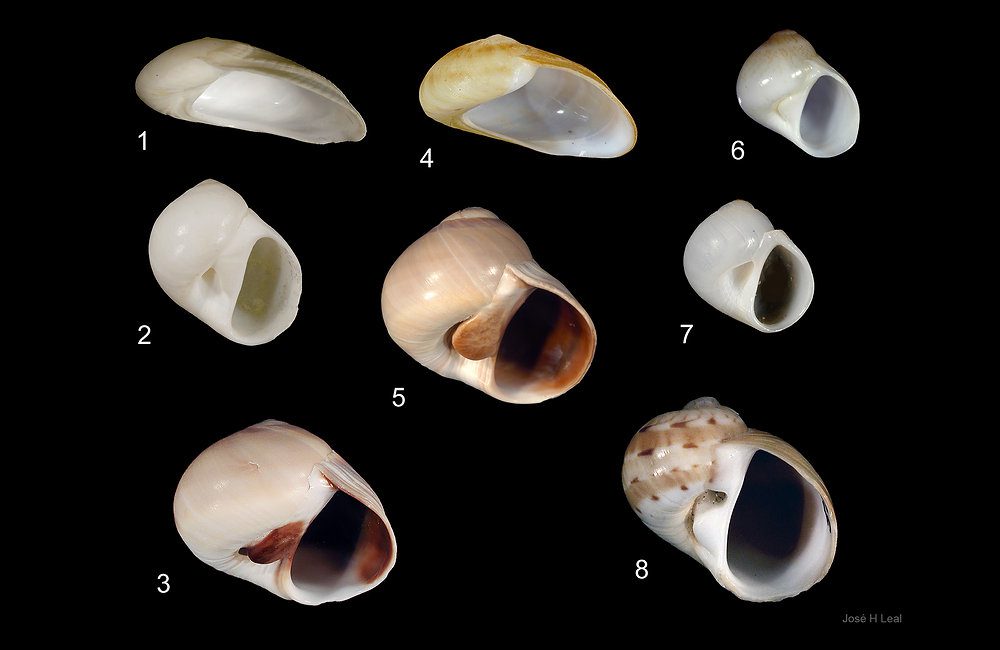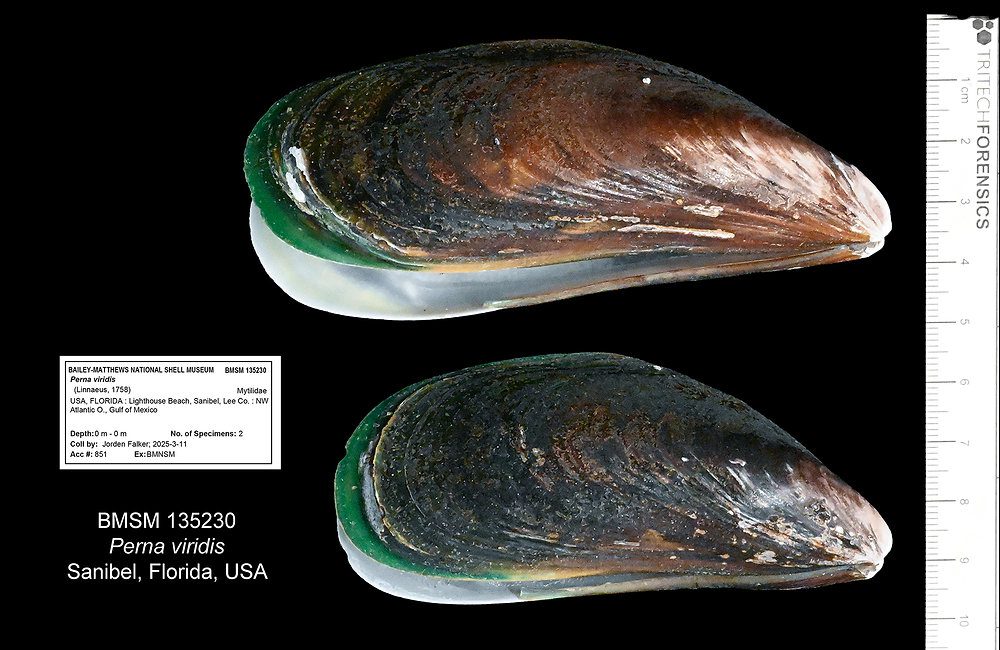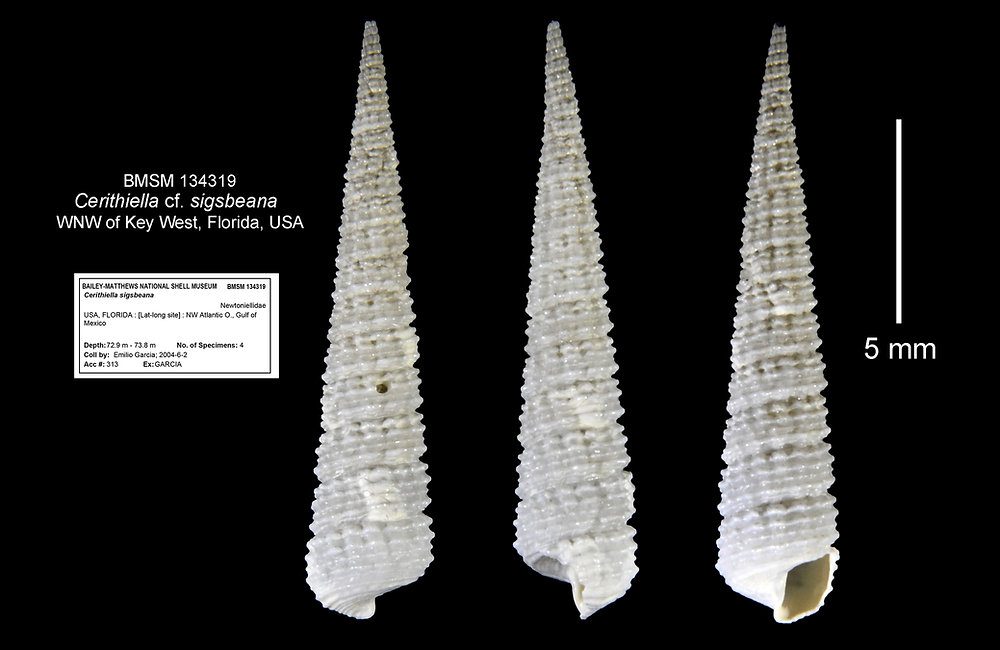
Shell of the Week: The Sigsbee’s Cerithiella
Cerithiella sigsbeana is a small gastropod of the family Newtoniellidae that reaches only 13 mm (about 0.5 inch). Its elongate shell is adorned with four beaded spiral cords (“ridges”). The specimen is catalogued as Cerithiella cf. sigsbeana in the Museum collection. After a consultation with Dr Mauricio Fernandes (a marine biologist at Federal University of the State of Rio de Janeiro, Brazil, and a specialist of the Newtoniellidae), he suggested that this species could be a variation extreme of C. sigsbeana, with very pronounced beads on the spiral cord;…
